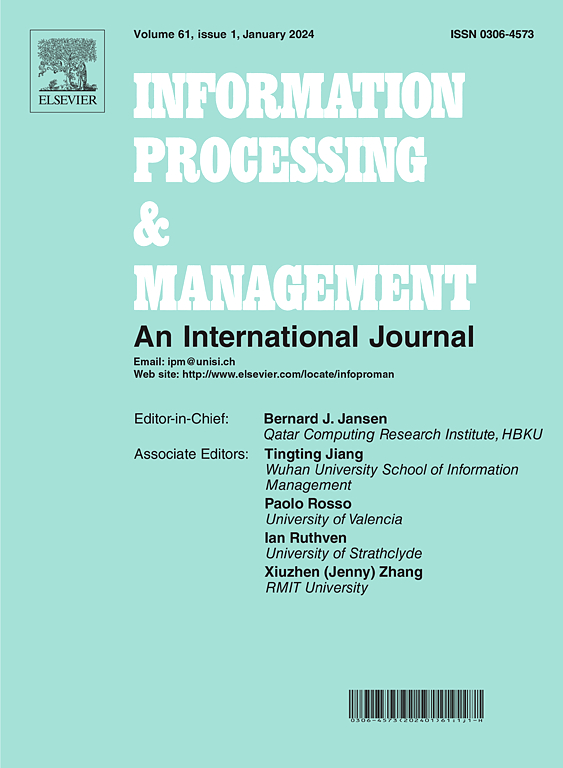A Toxic Euphemism Detection framework for online social network based on Semantic Contrastive Learning and dual channel knowledge augmentation
IF 7.4
1区 管理学
Q1 COMPUTER SCIENCE, INFORMATION SYSTEMS
引用次数: 0
Abstract
For real-time content moderation systems, detecting toxic euphemisms remains a significant challenge due to the lack of available annotated datasets and the ability to deeply identify euphemistic toxicity. In this paper, we proposed the TED-SCL framework (Toxic Euphemism Detection based on Semantic Contrastive Learning) to solve these problems. Firstly, we collected nearly 8 million comments and constructed a toxic euphemism dataset (TE-Dataset), which contains 18,971 comments, covering six topics and 424 PTETs (Potential Toxic Euphemism Terms). Next, we employed contrastive learning to separate toxic euphemism samples from harmless ones in semantic space and enhance the model’s ability to capture subtle differences. Lastly, we utilized a dual channel knowledge augmentation module to integrate background knowledge with toxic comments and improve the identification of toxic euphemisms. Experimental results demonstrate that TED-SCL outperforms existing SOTA in toxic euphemism detection tasks, achieving accuracy of 93.94%, recall of 93.36%, and F1 score of 93.23%. Furthermore, TED-SCL demonstrates better generalization, zero-shot capability, and greater robustness on different topics and datasets, which provides a new way for real-time content moderation systems to detect euphemistic and implicit toxicity effectively.
基于语义对比学习和双通道知识增强的在线社交网络有毒委婉语检测框架
本文章由计算机程序翻译,如有差异,请以英文原文为准。
求助全文
约1分钟内获得全文
求助全文
来源期刊

Information Processing & Management
工程技术-计算机:信息系统
CiteScore
17.00
自引率
11.60%
发文量
276
审稿时长
39 days
期刊介绍:
Information Processing and Management is dedicated to publishing cutting-edge original research at the convergence of computing and information science. Our scope encompasses theory, methods, and applications across various domains, including advertising, business, health, information science, information technology marketing, and social computing.
We aim to cater to the interests of both primary researchers and practitioners by offering an effective platform for the timely dissemination of advanced and topical issues in this interdisciplinary field. The journal places particular emphasis on original research articles, research survey articles, research method articles, and articles addressing critical applications of research. Join us in advancing knowledge and innovation at the intersection of computing and information science.
 求助内容:
求助内容: 应助结果提醒方式:
应助结果提醒方式:


